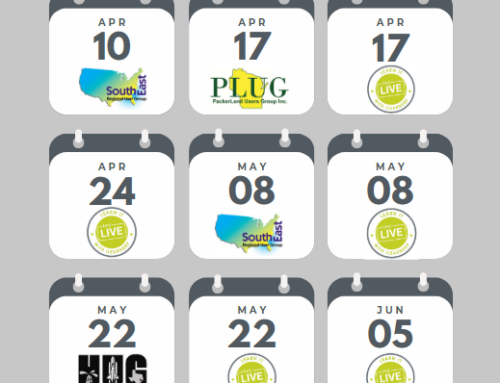 This is likely the first question one might ask when putting the concept of microlearning in conversation with JD Edwards training. Microlearning is simply learning that’s short and specific. Microlearning sometimes gets a bad wrap because it is perhaps more applicable to modern learners with their shorter attention spans and fast-paced, technology driven life-styles. Microlearning stands in contrast to more traditional modes of on-site training, or face-to-face learning, leading to the question: Can shorter bursts of instruction really lead to more proficient users? And, what tools are available today to better assess whether or not learners are getting the most out of training that utilizes microlearning methodology?
This is likely the first question one might ask when putting the concept of microlearning in conversation with JD Edwards training. Microlearning is simply learning that’s short and specific. Microlearning sometimes gets a bad wrap because it is perhaps more applicable to modern learners with their shorter attention spans and fast-paced, technology driven life-styles. Microlearning stands in contrast to more traditional modes of on-site training, or face-to-face learning, leading to the question: Can shorter bursts of instruction really lead to more proficient users? And, what tools are available today to better assess whether or not learners are getting the most out of training that utilizes microlearning methodology?
In past blogs we have looked at the ways eLearning is both cost-effective and time-saving. eLearning, like the granular instruction that subscribers to our EOne Academy receive, is just-in-time learning as students do not have to wait for an on-site course to be offered when they need it, nor do they have to sit through long class times to get the information they need to specifically complete their own tasks. We have taken some larger steps this year towards making our eLearning solution even more “micro” by shortening our video instruction, creating more quizzes, cultivating more on-line resources, providing the most up-to-date EnterpriseOne 9.2 environment, and simplifying our searching and reporting tools.
Here are some of the reasons we are compelled by microlearning:
- The latest research suggests that tested participants who took shorter (or even medium) length courses out-performed tested participants who took longer courses. How could more time and information not equal more learning? The theory is that shorter instruction creates less of a cognitive burden for learners, who can then better process their learning into their memory.
- Learners who have shorter bursts of instruction followed by immediate practice (whether it’s through questions, activities, or walking through a simulated environment), also do much better than learners who took longer courses with a longer time-lag between their class-time and their assessment. Microlearning works best when training concepts can be broken into short, specific blocks of instruction that can then be immediately tested or applied. The end goal of microlearning is not a “pass” of one big evaluation, but rather, evaluation that focuses upon specific objectives. These objectives can be combined or added onto down the road with more learning.
- Most LMS systems today, like the one used by the EOne Academy, have a rich plethora of reporting and evaluation options. Automated quizzes, simulated environments, and search and tracking capabilities for courses are readily available to the modern eLearner. This technology supports microlearning, as learners and their supervisors can track progress and assess any holes or gaps in learning and create a learning plan in order to continue to work towards objectives.
- UPK (or User Productivity Kit) provides JD Edwards training content that is delivered in an interactive, online learning mode. We have found that the various interactive learning modes of the tool, such as See It! and Try It! help users not only watch broken down process steps when and where they need to but also enables them to try the steps until they feel like they are proficient in the process. There is also a Know It! mode which assesses learning to a percentage in order to document and immediately test proficiency.
We will always stay on top of the best and brightest ideas in training and adult learning theory so stay tuned.
Like this? Please share.




